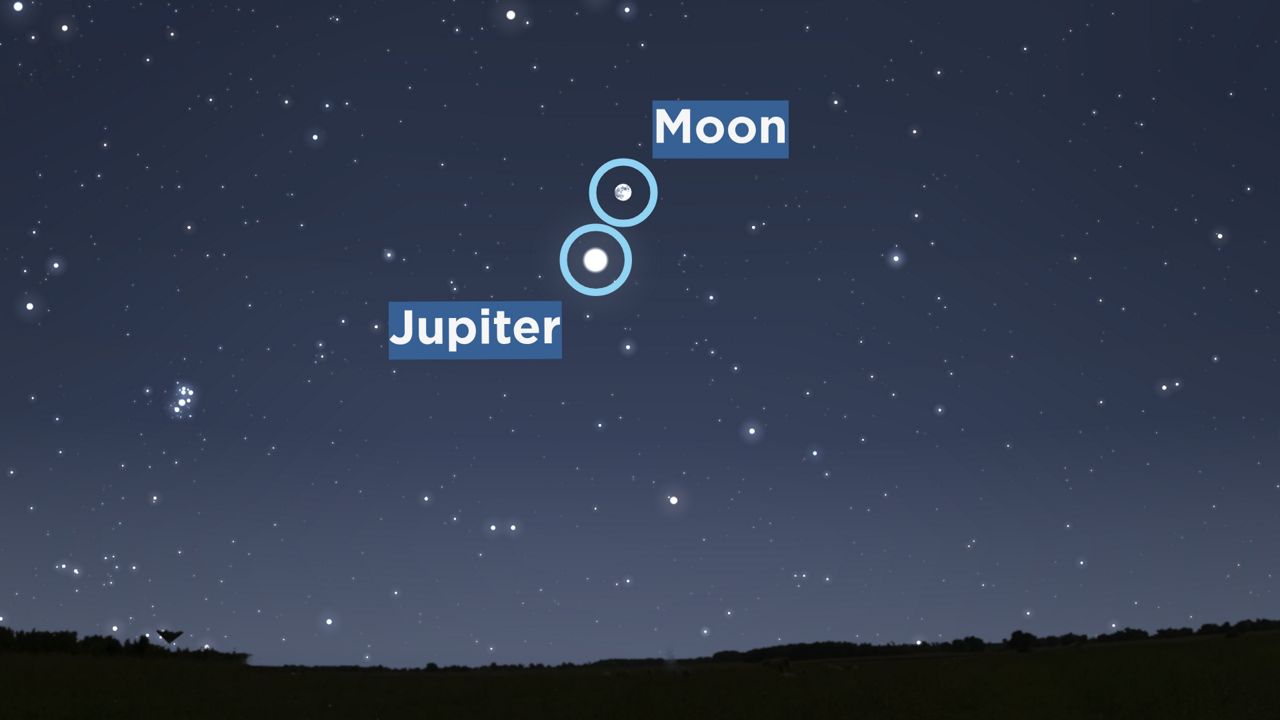A full moon brightens our night sky, and it’ll help you find our solar system’s biggest planet.
The moon will be fullest at 4:24 p.m. ET Saturday afternoon, which is before it rises. You won’t miss out, though, since it’ll still appear full both nights this weekend.
This is the Full Hunter’s Moon, since it comes after the Full Harvest Moon. NASA says the earliest use of “Hunter’s Moon” goes back to the Oxford English Dictionary in 1710. Some Native Americans also referred to it as the Hunting Moon, as well as the Falling Leaves Moon and Someone Stores Food Moon.
When you look at this full moon Saturday night, you’ll probably notice a bright dot just underneath. That’s Jupiter, which will follow just below the moon throughout Saturday night. In fact, if you have binoculars, pull them out and you might spot up to four tiny dots of light next to Jupiter. Those are its largest moons!
Simulated image of the sky early Saturday night. Jupiter is enlarged and will actually appear smaller than the moon. (Adapted from Stellarium)
You’ll also see Big Dipper low in the northern sky.
And if you get up before the sun does, you’ll see Venus as the bright “morning star” (even though it’s a planet, of course) rising in the east before sunrise.
Check out our celestial calendar to see the night sights coming in the final two months of the year.
Our team of meteorologists dives deep into the science of weather and breaks down timely weather data and information. To view more weather and climate stories, check out our weather blogs section.

